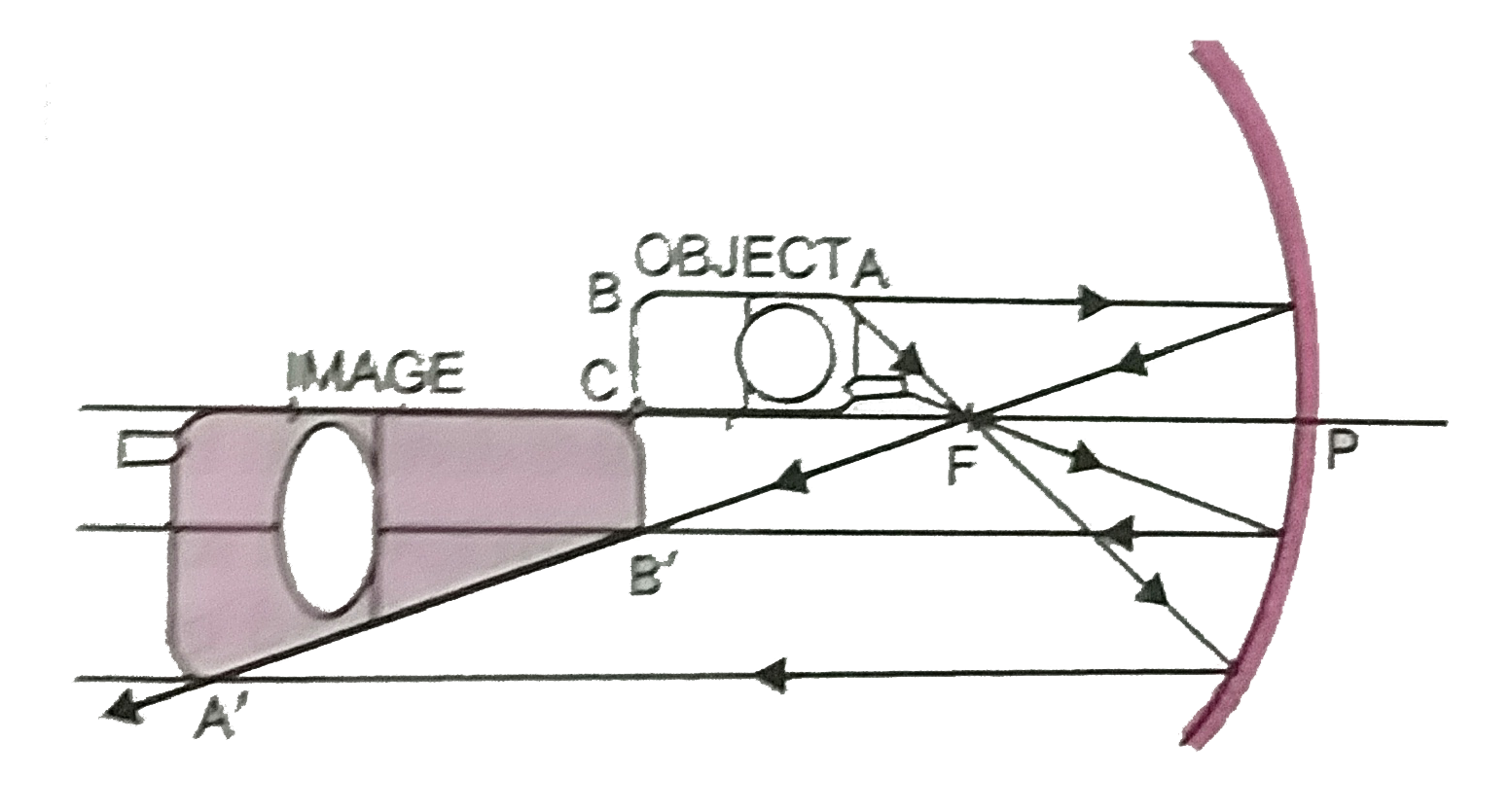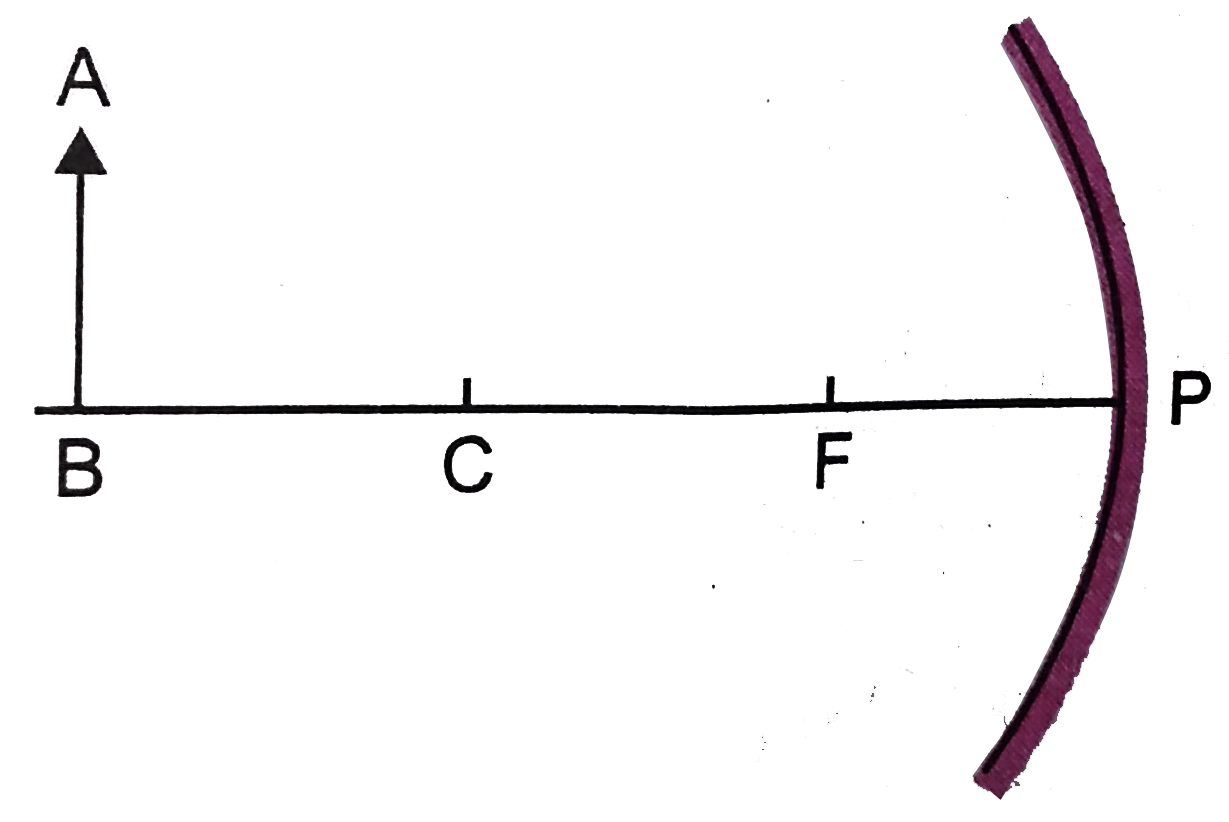A mobile phone lies along the principal axis of a concave mirror as shown in Fig. Show by suitable diagram, the formation of its image. Explain why the magnification is not uniform, and distortion will occur depending on the location of the mobile with respect to the mirror.

The ray diagram for the formation of the image of the phone is shown in Fig. 9.7. The image of the part which is on the plane perpendicular to principal axis will be on the same plane. It will be of the same size, i.e., B′C = BC. You can yourself realise why the image is distorted.
Topper's Solved these Questions
- RAY OPTICS AND OPTICAL INSTRUMENTSBook:NCERT ENGLISHChapter:RAY OPTICS AND OPTICAL INSTRUMENTSExercise:Exercise
Explore 32 Videos
- NUCLEIBook:NCERT ENGLISHChapter:NUCLEIExercise:Exercise
Explore 31 Videos
- SEMICONDUCTOR ELECTRONICS MATERIALS DEVICES AND SIMPLE CIRCUITSBook:NCERT ENGLISHChapter:SEMICONDUCTOR ELECTRONICS MATERIALS DEVICES AND SIMPLE CIRCUITSExercise:Exercise
Explore 15 Videos
Similar Questions
(a) A mobile phone lies along the principal axis of a concave mirror. Show, with the help of a suitable diagram, the formation of its image. Explain why magnification is not uniform.
(b) Suppose the lower half of the concave mirror's reflecting surface is covered with an opaque material. What effect this will have on the image of the object? Explain.
View SolutionA thin stick of length f/5 placed along the principal axis of a concave mirror of focal length f such that its image is real and elongated just touch the stick. What is the magnification?
View Solution
Knowledge Check
A rod of length 10 cm lies along the principal axis of a concave mirror of focal length 10 cm in such a way that the end closer to the pole is 20 cm away from it. Find the length of the image.
A10cmB15cmC2.5cmD5cm
An object AB is kept in front of a concave mirror as shown in Fig.

(i) Complete the ray diagram showing the image formation of the object.
(ii) How will the position and intensity of the image be affected surface is painted black ?
View SolutionAn infinitely long rod lies along the axis of a concave mirror of focal length f. The near end of the rod is distance u>f from the mirror. Its image will have length
View SolutionA rod of length 10 cm lies along the principal axis of a concave mirror of focal length 10 cm in such a way that the end closer to the pole is 20 cm away from it. Find the length of the image.
View SolutionA rod of length 10 cm lies along the principal axis of a concave mirror of focal length 10 cm in such a way that its end closer to the pole is 20cm away from the mirror. The length of the image is
View SolutionDraw a ray diagram to show the formation of image by a concave mirror for an object beyond its centre of curvature. State three characteristics of the image.
View SolutionWhen a pin is moved along the principal axis of a small concave mirror, the image position coincides with the object at a point 0.5m from the mirror. If the mirror is placed at a depth of 0.2m in a transparent liquid, the same phenomenon occurs when the pin is placed 0.4m from the mirror. find the refractive index of the liquid shown in fig.

View SolutionBy drawing a neat diagram show the formation of an image in a concave mirror when the object is between the pole and the principal focus of the mirror. State the characteristics of the image.
View Solution